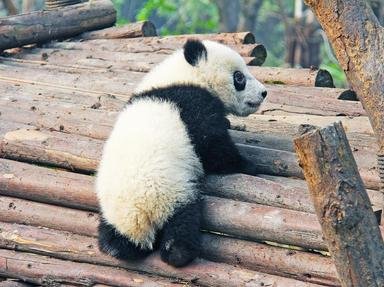Quiz Answer Key and Fun Facts
1. Our first creature is found in many mountainous regions around the world, and so is very much at home at this Himalayan terrain. This bird, commonly known as the bearded vulture, has learnt to drop heavy animal bones onto rocks in order to crack them, exposing the rich marrow which makes up almost its entire diet. Which beautiful raptor is being described here?
2. The Indian rhinoceros is found in the grasslands which surround the Ganges in Northern India. Like its African cousins, it is a solitary creature and is characteristically aggressive, most likely due to its poor eyesight. Which of the following most accurately describes the Indian rhinoceros?
3. Spending its time in the muddied waters of Northern India, our next creature is the Ganges river dolphin. The snout of this dolphin is noticeably longer than most other dolphin species and its dorsal fin has almost completely disappeared. What is another defining characteristic of the Ganges river dolphin?
4. Also found in Northern India are red pandas. These pandas are seen as very different to the giant panda of China. However, which of these qualities links the two species of panda?
5. Despite being of a completely different order, our next animal's head region is very similar in appearance to that of a kangaroo's. On top of this, it roams around the forested areas which surround the river Ganges whilst sporting a pair of Dracula-type fangs. What is the name of this odd beast?
6. Unlike the spotted hyena, which lives exclusively in Africa, there is a hyena which lives in India. What is the name of this hyena?
7. One problem which many humans face in India are the macaques, which steal and beg from shops and pedestrians. One macaque, however, is less bold than its brothers. This macaque prefers to avoid human activity and can be identified by its long face, white mane, and dark coat. Which type of macaque is this?
8. This next creature can be found in the Sundarbans at the foot of the Ganges, and indeed in the river itself. This is because our next creature is the mudskipper - a fish which spends much of its time on dry land. What allows this fish to spend so much time out of the water?
9. Often found wading in the shallows of the Ganges, our next creature is identified by its red and white head, as well as the fact that it the tallest of all flying birds. Whilst the Hindus have a fundamental respect for all animals, this particular bird is held in special regard - symbolising strength of marriage. Which animal is this?
10. India has decided to reintroduce to its country an animal which is familiar to many of us. It was declared extinct in the Hindu country in 1952. Which animal is this?
Source: Author
doublemm
This quiz was reviewed by FunTrivia editor
crisw before going online.
Any errors found in FunTrivia content are routinely corrected through our feedback system.

